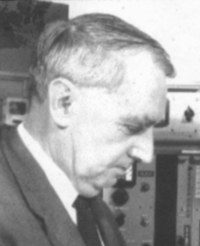|
 Before
the war Alec Harley Reeves
worked at ITT in Paris where he invented and patented Pulse Code Modulation (PCM).
This is a method of communicating analogue waveforms as digital pulses which
enable robust communications in spite of interference with signals that can be reconstituted
at repeater stations between communications links. At that time, the
electronics technology of valves meant the technique was not commercially
viable. However, from the 1950s onwards with the arrival of transistors
and solid state electronics, PCM started to gain more widespread use.
Today it is the backbone which underpins the worldwide digital communications
revolution. Before
the war Alec Harley Reeves
worked at ITT in Paris where he invented and patented Pulse Code Modulation (PCM).
This is a method of communicating analogue waveforms as digital pulses which
enable robust communications in spite of interference with signals that can be reconstituted
at repeater stations between communications links. At that time, the
electronics technology of valves meant the technique was not commercially
viable. However, from the 1950s onwards with the arrival of transistors
and solid state electronics, PCM started to gain more widespread use.
Today it is the backbone which underpins the worldwide digital communications
revolution.
During the war Reeves worked in Purbeck and invented Oboe - a radio precision bombing aid.
It was used to great effect by Air Vice Marshall Bennet's
Pathfinder Force. Flown mainly in the fast,
high-flying Mosquito aircraft, a signal from ground
control gave the precise moment to release target
indicator bombs, so marking the dropping zone for the main
force of following heavy bombers. Hitler was
greatly perturbed by the RAF's abiulity to score direct
hits on the Krups armament works at Essen through 10/10th
cloud. In the 1960s Reeves went on to pioneer the
development of fibre optic links at Standard Telephone & Cables. Reeves'
revolutionary development of Pulse Code Modulation and groundbreaking work on
fibre optics has prompted a few to title him the 'father of the information
age'. However, he has never gained the widespread recognition he
probably deserves - perhaps because his outstanding contributions were more in
the realm of ideas rather than in more tangible equipment or demonstrations.
Alec Harley Reeves CBE
10 March 1902 - 13 October 1971
|